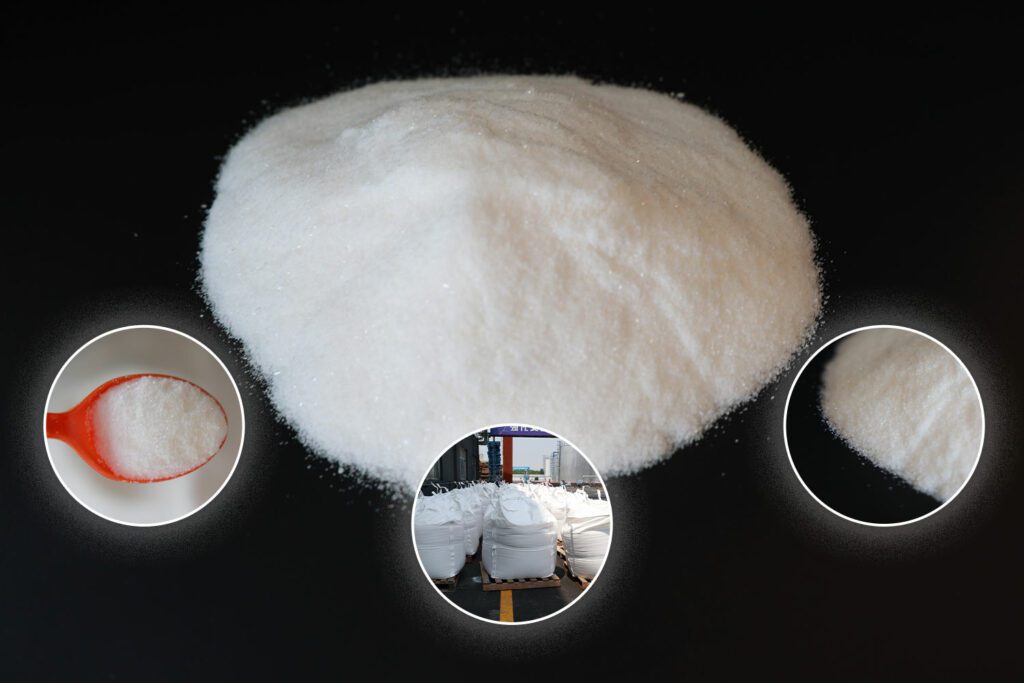Введение
Welcome to our exploration of the fascinating world of sodium formate melting point. Sodium formate is a compound with diverse industrial applications, and its melting point is a crucial parameter that influences its behavior in various processes. In this brief introduction, we’ll delve into the significance of sodium formate melting point, discussing how this property impacts its solubility, reactivity, and efficacy in different industrial settings. Join us as we uncover the secrets behind sodium formate melting point and its role in shaping industrial processes.
Delving into the Chemistry of Sodium Formate

Sodium formate, represented by the chemical formula HCOONa, is an organic salt composed of sodium cations (Na+) and formate anions (HCOO-). These anions, derived from formic acid, impart unique characteristics to sodium formate, making it a sought-after compound for various industrial processes.
The Melting Point of Sodium Formate: A Crucial Property
Sodium formate boasts a relatively low melting point of 157°C (315°F), which falls significantly below that of many other salts. This low melting point plays a pivotal role in its industrial applications, offering several advantages:
- Ease of Handling: Sodium formate’s low melting point makes it easier to handle, melt, and process, reducing energy requirements and simplifying manufacturing processes.
- Enhanced Solubililty: The low melting point contributes to sodium formate’s high solubility in water, enabling the formation of concentrated solutions that are essential for various applications.
- Reduced Viscosity: The low melting point translates into lower viscosity, facilitating the flow and pumping of sodium formate solutions, particularly in industrial settings.
Промышленное применение формиата натрия
The favorable properties of sodium formate, particularly its low melting point, have opened doors to a wide range of industrial applications:
- Текстильная промышленность: Sodium formate serves as a dyeing and printing agent in the textile industry, enhancing color fastness and improving fabric properties.
- Leather Industry: In the leather industry, sodium formate acts as a tanning agent, imparting strength, flexibility, and water resistance to leather products.
- Paper Industry: Sodium formate finds application in the paper industry as a dispersing agent and defoamer, improving paper quality and reducing production costs.
- Chemical Synthesis: Sodium formate serves as a precursor in the synthesis of various organic compounds, including formamide, oxalic acid, and methyl formate.
- Сельское хозяйство: In agriculture, sodium formate acts as a preservative and silage additive, preventing spoilage and enhancing the nutritional value of animal feed.
Impact of Sodium Formate Melting Point on Industrial Processes
The low melting point of sodium formate significantly impacts industrial processes in several ways:
- Reduced Energy Consumption: The lower melting point demands less energy for melting and processing, leading to cost savings and environmental benefits.
- Improved Process Efficiency: The ease of handling and lower viscosity of sodium formate solutions enhance process efficiency, reducing production time and waste generation.
- Enhanced Product Quality: The unique properties of sodium formate contribute to improved product quality in various industries, such as textiles, leather, and paper.
Comparison of Sodium Formate with Other Compounds
To highlight the significance of sodium formate’s melting point, it’s useful to compare it with other compounds that serve similar functions but have different melting points.
| Compound | Melting Point (°C) | Промышленное применение | Преимущества |
|---|---|---|---|
| Формиат натрия | 253 | Pharmaceuticals, agriculture, oil and gas | High solubility, biodegradable, low toxicity |
| Sodium Acetate | 288 | Dyeing, photography, food preservation | Lower solubility, different pH adjustment capabilities |
| Calcium Formate | 560-590 (decomposes) | Road de-icing, agriculture | Acts as a de-icer, higher stability at high temperatures |
Conclusion: Sodium Formate Melting Point
Sodium formate, with its unique properties and relatively low melting point, stands as a valuable and versatile compound in the industrial realm. Its applications span across diverse sectors, from textile manufacturing to leather processing and agricultural practices. Understanding the significance of sodium formate’s melting point is essential for optimizing its utilization, enhancing industrial processes, and ensuring product quality. As we continue to explore the potential of sodium formate, its role in shaping industrial advancements is bound to grow even more prominent.
Часто задаваемые вопросы
Q1: What factors influence the melting point of sodium formate?
The melting point of sodium formate is primarily influenced by the strength of the intermolecular forces between sodium formate molecules. These forces, primarily hydrogen bonds, determine the energy required to break the crystalline structure and transition into a liquid state.
Q2: How does the melting point of sodium formate compare to other salts?
Sodium formate’s melting point is generally lower than that of many other inorganic salts, such as sodium chloride (NaCl) with a melting point of 801°C (1474°F) and potassium chloride (KCl) with a melting point of 770°C (1418°F).
Q3: What safety precautions should be taken when handling sodium formate?
Always follow proper safety protocols when handling sodium formate, including wearing appropriate personal protective equipment, ensuring adequate ventilation, and storing the compound in a safe and secure manner.
Q4: What are the environmental considerations for using sodium formate?
Sodium formate is generally considered biodegradable and environmentally friendly. However, proper waste disposal practices should be followed to minimize any potential environmental impact.


